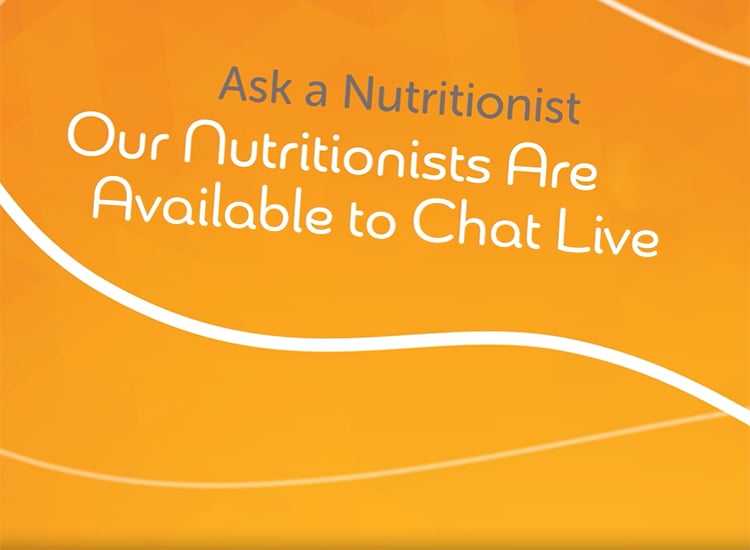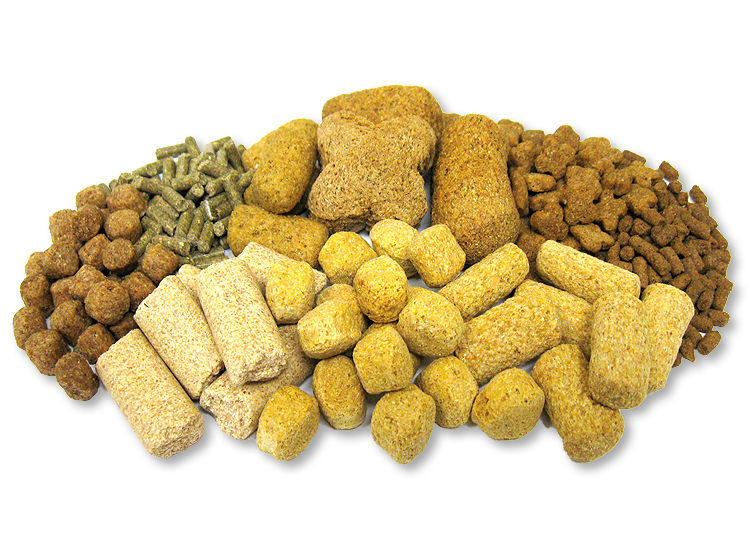Standard Natural Ingredient Diets
1. What are standard diets?
A more complete name would be Standard Natural Ingredient Diets. These diets are manufactured in large quantities (at least 2 tons) and stocked at one or more Inotiv Teklad distribution centers. Standard natural ingredient diets are readily available and can generally be delivered within a few days after an order is placed. These diets primarily contain grains (corn, wheat), legumes (soybean meal) and to a lesser extent ingredients such as fish meal, and meat and bone meal. Standard natural ingredient diets include Global and Traditional diets and are available Irradiated and/or Certified.
2. What are Global Diets?
Using standardized fixed formulas and ingredients purchased under the same stringent specifications in the United States and Europe, Inotiv's unique Teklad Global Diets Program provides nutritional consistency to national and multinational companies for their worldwide research, maximizing global study uniformity. Global Diets have the same product names in all countries. The Global Rodent diets have lower protein levels than most traditional diets and are formulated free of alfalfa with zero or modest amounts of soybean meal, thus minimizing the presence of natural phytoestrogens.
3. What are Traditional diets?
Inotiv offers a variety of Traditional Teklad diets for the common laboratory animal species. These fixed formula diets are made from high quality ingredients. While traditional diets will supply the known nutrient needs of laboratory animals, we recommend that researchers consider the use of a diet from our Global Diet line. The traditional rodent diets were formulated decades ago based on understanding of rodent nutrition, ingredients, and diet manufacturing at the time. There was limited appreciation of the effects of non-nutrients, such as phytoestrogens, on experimental results. Alfalfa meal and soybean meal are the major sources of phytoestrogens in laboratory animal diets. These ingredients, particularly soybean meal, are found in most traditional rodent diets.
4. What are Fixed Formula diets?
Fixed Formula diets are diets that are manufactured in accordance with a formula that remains unchanged from one production to the next. In conjunction with strict quality standards for raw materials, this approach ensures quality and consistency by minimizing nutrient variability and the variability of other phytochemicals in the diet which might affect a research study.
5. What are certified diets?
Certified diets are diets that have been tested for a standard panel of environmental contaminants that are known to be capable of interfering with a study. These diets help ensure that a study complies with the FDA’s Good Laboratory Practices regulations requiring periodic feed analysis. An Inotiv certificate of analysis signed by a nutritionist is made available to the customer.
6. How does Inotiv ensure the high quality and consistency of Teklad Global and Traditional standard diets?
Our #1 goal is to provide quality and consistent products to our customers. This begins with ensuring that raw materials of only the highest consistency and quality are obtained. Raw materials are only obtained from approved suppliers who agree to meet our quality standards. Suppliers are audited on a regular basis and their products are tested for quality before being accepted into our facilities. Fixed formulas and established manufacturing procedures are in place for each product which ensure that the product is manufactured consistently with each production. In-process and final product testing is completed prior to distribution of the product to a customer. Inotiv utilizes its own network of company owned and operated distribution centers throughout the US and Canada rather than use outside distributors.
7. What is the shelf life of standard diets?
There is no definitive point where one is able to predict when a specific diet will spoil or become deficient in one or more nutrients. The common guideline of a 6 month shelf life is based on longstanding practice in North America. In Europe and Asia, differences in local practices and regulatory oversight have led to Teklad standard natural ingredient diets being routinely used out to 9 months and sometimes 12 months post-manufacture. This practical experience, along with literature support and vitamin testing over time, gives us confidence that these diets continue to support animal health and study integrity out to at least 9 months post-manufacture. Please refer to your institution for guidance if you are unsure of local policies.
Recommended storage conditions:
- Cool and dry; at or below 70 degrees Fahrenheit, humidity below 50% ideal, but up to 65% is acceptable
- Clean and free of pests
- In original packaging or in a container that prevents continuous exposure to light and minimal exposure to air
For more detailed information on shelf life, please click here.
8. Does Inotiv offer irradiated standard diets and bedding products?
Inotiv offers irradiated diets, bedding, and enrichment items. Irradiation reduces the bioburden (number of organisms) contained by a product by exposing the product to gamma ionizing radiation from cobalt-60. Organisms exposed to gamma irradiation are damaged at the molecular level often with lethal effects. The net result is a decrease in the amount of viable microorganisms present in the product. Inotiv irradiates all Teklad products at a minimum dose of 2.0 Mrad (20kGy) and a maximum of 5.0 Mrad (50 kGy).
9. How do autoclavable diets differ from non-autoclavable diets?
Autoclaving destroys vitamins and amino acids that are supplemented in the diet. To compensate for this destruction, autoclavable diets contain an additional supplement of vitamins and supplemental amino acids. Autoclavable diets are packaged in perforated bags which allow steam from the autoclave to penetrate throughout the diet when the diet is autoclaved inside the bag.
10. What are phytoestrogens?
Phytoestrogens are phytochemicals naturally produced by plants which interact with endogenous estrogens. They have some similarity in molecular structure compared to endogenous estrogens and bind to some extent with estrogen receptors. Phytoestrogens have been shown to affect mammalian physiology including cancer growth, atherosclerosis, calcium-phosphorus metabolism, and behavior. This is of concern to researchers because standard natural ingredient diets are often composed of ingredients which contain significant quantities of phytoestrogens. Soybean meal is an ingredient common to standard natural ingredient diets which contains a class of phytoestrogens called isoflavones. The two primary isoflavones are genistein and daidzein. Alfalfa meal is a second ingredient common to standard natural ingredient diets. It contains the phytoestrogen coumestrol.
11. Does Inotiv offer Teklad diets that are phytoestrogen free?
The term “free” implies the total and complete absence of phytoestrogens. This would exclude any diet composed of natural ingredients. The only type of diet that would be completely free of phytoestrogens would be soy protein-free purified diet. However, Inotiv offers four Teklad Global Rodent Diets that exclude ingredients such as alfalfa meal and soybean meal which are known to contain large amounts of phytoestrogens. The diets 2014, 2016, 2019, and 2020X while not completely “free” are best described as minimal phytoestrogen diets. Quarterly testing of these diets for isoflavones (phytoestrogens from soybean) typically reveals levels ranging from less than detectable to 20 ppm. For some perspective, most traditional rodent diets contain from 200 to 500 ppm isoflavones. Phytoestrogen minimal diets such as 2014, 2016, 2019, and 2020X are generally acceptable for studies where phytoestrogens are of concern.
Custom research diets
12. What are custom research diets?
Custom research diets are made in small quantities and are generally not stocked. These diets are typically formulated for a specific type of research objective. These diets can consist of refined ingredients (purified diets), natural ingredients (grain and other ingredients found in standard diets), or utilize a standard diet as a base to which other ingredients are added. Any of these diet types can serve as the basis to add a customer supplied ingredient (test article, pharmaceutical, food extract, etc). We have approximately 20,000 diets in our database, so the formula you require may already have been created. We also utilize this database as a resource when formulating new diets. We will be pleased to provide you a complete formula sheet, containing the ingredients and inclusion rate, macronutrient values, key features, and planning and ordering information.
13. What are purified diets?
Purified diets use refined ingredients such as casein, sucrose, cornstarch, and cellulose. These human food grade ingredients have relatively simple chemical compositions (predominantly one nutrient classification) and this feature is important for manipulating individual nutrients for research purposes. Additionally, most refined ingredients contain very limited levels of non-nutrients that could have biological activity. This is in contrast to the natural ingredients (corn, wheat, soybean meal, etc.) used in standard diets, which have relatively complex chemical compositions as well as various phytochemicals that may or may not be physiologically relevant. Refined ingredients are obtained from reliable suppliers of human grade products, and we consistently obtain ingredients from the same vendors, year after year. Additionally, the major protein ingredients are assayed for a specific panel of nutrients to ensure minimal variation. Thus, purified diets will be repeatable and can easily be modified. Examples of common purified diets include AIN-76A (CA.170481), AIN-93G (TD.94045), and AIN-93M (TD.94048).
14. What is the difference between AIN-76A, AIN-93G, and AIN-93M?
The American Society for Nutrition (ASN) (formerly American Institute of Nutrition, AIN) has promoted the use of nutritionally adequate purified diets for rodents, because many researchers may not be aware of potential nutritional variables. The AIN-76 formula was published in 1977, and became AIN-76A with minor revision (increased Vitamin K) in 1980. The diet has been used extensively, and there were several suggestions about improvements. This resulted in the publication of two formulas in 1993, AIN-93G (for growth, reproduction, and lactation) and AIN-93M (for maintenance). The article J. Nutr. 123: 1939-1951 (1993) discusses the rationale for the several revisions. Some of the changes include soybean oil rather than corn oil, the addition of other carbohydrate sources and lower sucrose, decreased phosphorus, cystine in place of methionine, inclusion of several trace mineral elements, and a few vitamin adjustments. The maintenance diet has less protein and fat.
15. How does Inotiv ensure the high quality and consistency of Teklad custom research diets?
Each formula is given a unique identification number and retains that identity among the thousands of formulas in our files. This assures the same formula will be used even years later. Upon production, a six or seven-digit "Rx" lot number is assigned that allows for traceability through all phases of diet production. These detailed production records are kept for every item produced. Quality-control samples are retained for nine months. Each lot of the major protein ingredients is analyzed for a number of nutrients to verify uniformity from lot to lot. Care is taken to retain reputable vendors for these refined ingredients.
16. Can Inotiv add test compounds to diets?
Yes, we can help you in adding a test compound or ingredient to a diet. This is often a convenient approach to dosing research animals. When adding a compound to a diet, there are some important safety and stability considerations. Please see customer supplied ingredients for more specific information.
17. Why should I contact a Nutritionist?
A phone call or an email exchange with one of our staff will augment the information that you gather from the web site or published literature, and you are more likely to receive a diet that best meets your particular needs. We are careful to maintain confidentiality, and will sign formal agreements if necessary. Please contact us at askanutritionist@inotivco.com for consultation regarding your specific diet needs.
18. What information will help in the design of a custom diet formula?
Advise us why the diet is needed, and for what animal species. Discuss the nutrients or ingredients of interest in as much detail as possible. Please avoid subjective descriptions such as "low, normal, and high" because these terms have different meanings to various researchers. Provide us with a copy of any existing formula to be duplicated or modified, and any journal article(s) upon which your research may be based. Let us know if the diet must be irradiated.
19. What is the minimum order quantity?
Our minimum order for custom research diets is 3 kg. This is particularly convenient when feeding small numbers of mice, especially for diet that contains your test compound. The minimum quantity for vitamin and mineral mixes is 500 g.
20. How are custom research diets priced, and how can I place an order?
Prices are dependent on formula details, ingredient composition, order quantity, and form (pellet or powder). If you know the product code, contact customer service at 800.483.5523, 608.277.2066 (fax) or teklad@inotivco.com. If you are unsure of the product code, have a new request, or require other technical information, contact a Nutritionist at 800.483.5523 or askanutritionist@inotivco.com.
21. How are custom diets packaged?
Standard packaging includes a small box (9 x 9 x 11 inches) that will fit up to five kg, a medium box (10 x 10 x 15 inches) that will fit up to ten kg, and a larger heavy-duty box (13 x 13 x 21 inches) which is primary used when there is vacuum packaging, and for some powder diets and ingredients. Every container also includes a three-mil poly liner. Vacuum packaging and specific quantity packaging are also available at additional cost. Vacuum packaging will typically reduce the amount of diet fit into a box. Contact us at teklad@inotivco.com for more information.
22. How long after I place my order will I receive my custom diet?
Diets are custom made to fill each order. The typical lead-time between order and shipment is ten business days. The exceptions to this are TD.88137, TD.06414, and TD.01306 which for orders of 25 kg or less, are usually available within a week. If irradiation is required (add ten business days). We can often accommodate your rush production needs, for an additional fee. Contact us at teklad@inotivco.com for more details. Transit time depends on the type of delivery method used (regular ground, overnight, etc.). Weight and delivery method affect shipping costs, which are typically prepaid and added to the invoice.
23. What is the shelf life of custom research diets?
There is no definitive point where one is able to predict when a specific diet will spoil or become deficient in one or more nutrients. Custom research diets are perishable and should be refrigerated at 4 degrees celsius (40 degrees fahrenheit) or lower (see Fullerton, et.al. J Nutr. 112:567-573, 1982). As a general guideline, diets can be stored this way for up to six months. Freezing a diet may slow reactive processes, but there is not sufficient information available to recommend feeding a diet past six months as a general guideline. Use of diets beyond the recommended use date will be subject to the protocols of your institution.
Custom research diets vary significantly in their formulation. There may be certain features of a diet that merit a shorter shelf-life. To learn more about storage and use recommendations, and to help you assess if your diet has features that may warrant a shorter shelf-life we have put together a guide. If you have further questions about your diet, contact us at askanutritionist@inotivco.com.
24. Can custom research diets be irradiated?
Barrier facilities or certain animal models require sterilized diet. Most custom research diets do not withstand autoclaving; however, we can arrange for qualified diets to be irradiated. The irradiation dose range is two to five MRad, or 20-50 kGy. Nominal fees and extra time are involved. Please contact us at askanutritionist@inotivco.com for details about irradiation costs and additional lead-time.
A nutritionist can assist you in determining if a formula is suitable for irradiation. Irradiation will lead to selective vitamin loss, and it is our practice to increase the inclusion rate of certain vitamin mixes to help ensure that the final diet contains sufficient vitamins. Irradiated diets are double-bagged. Vacuum packaging may be helpful in reducing irradiation-induced peroxide formation in high fat diets.
25. How can I order a diet supplied to someone by Inotiv, and subsequently noted in a research article?
Some diet formulas are fairly common or generic, and probably are not considered confidential by those who use them, especially when authors provide a product number. Formulas might be difficult to trace without a product number, and then must be discussed with a nutritionist. We will review each formula for history and confidentiality.
26. Can Inotiv manufacture a diet made by another company?
Provide us with at the very least a description, preferably the complete formula, and we’ll give you an assessment of our ability to make that formula.
27. Can any custom diet formula be made in pellet form?
There are limitations for pelleting diets. The level and type of fat, the carbohydrate composition, and the interaction of fat and carbohydrate will impact our ability to pellet a diet. Consult a nutritionist at askanutritionist@inotivco.com for more information about specific formulas.
28. What is “Vitamin-free” test casein?
“Vitamin-Free” Test Casein is an alcohol-extracted casein prepared from regular casein, and typically has 90-91% protein (%N x 6.38), 0.1% fat, and 4-7% % moisture. The alcohol extraction reduces fat, fat soluble vitamins, and some of the B vitamins. This protein source is most appropriately used in vitamin deficient diets, and when researchers want to minimize background fat in a diet. We have prepared this specialty ingredient for many years, and this is available for repack. If you need this ingredient, consider Inotiv as your preferred source.
29. Does Inotiv sell diet ingredients?
Yes. Some of the same high-quality ingredients used to produce custom research diets can also be supplied to those who prepare their own diets. See diet ingredients for more information.
30. How do I cite a Teklad Diet in a publication?
When citing Teklad diets, include a description, and a product number — standard grain based diets are typically four numbers while custom diets usually start with “TD” followed by five or six numbers. Use the following examples as a guide:
“Rats were maintained on minimal phytoestrogen diet 2016 Teklad Global 16% Protein Rodent Diet, Inotiv, Madison, Wisconsin USA, www.inotivco.com”
“Obesity was induced by feeding Teklad high fat diet TD.06414 with 60% of kcal from fat, primarily lard, Inotiv, Madison, Wisconsin USA, www.inotivco.com”
“Mice were fed Teklad vitamin D deficient diet TD.89123, Inotiv, Madison Wisconsin USA, www.inotivco.com” Each diet has a unique product number that will allow others to quickly and easily obtain information about the diet used in your studies by contacting teklad@inotivco.com or askanutritionist@inotivco.com.
31. Are compounds (such as doxycycline, fenbendazole, customer supplied test compounds, etc) considered pharmaceutical grade once added to an animal diet?
No. According to the NIH OACU Guidelines for Use of Non-Pharmaceutical-Grade Chemicals/Compounds in Laboratory Animals (2008), the vehicle used to facilitate administration of a compound is as important of a consideration as the active compound in the preparation. Diet as a vehicle, either whole or as the sum of its parts, would not meet the standard for pharmaceutical grade as defined by this document.
You may have been asked this question by your IACUC due to a passage in the 8th edition of the Guide for the Care and Use of Laboratory Animals (2011) stating that pharmaceutical-grade chemicals and other substances should be used, when available, for all animal-related procedures (page 31). In general, deviations from “Must” or “Should” statements within the Guide require justification and approval by your institutional IACUC.
Alternative dosing techniques (gavage, injection) can introduce stress from handling and increase the risk for potential injury. Stress can affect animal well-being as well as scientific parameters through modifications in behavior and physiology. Dosing via diet is an established method for delivering test compounds to animals that is non-invasive, reducing stress and potential injury from handling. Therefore, use of non-pharmaceutical grade compounds as a delivery method is justified, as it is advantageous for both animal welfare and experimental design.
Further reading:
- Guide for the Care and Use of Laboratory Animals: 8th Edition (2011). National Research Council Committee for the Update of the Guide for the Care and Use of Laboratory Animals.
- Guidelines for the Use of Non-Pharmaceutical-Grade Chemicals/Compounds in Laboratory Animals. (2008). Animal Research Advisory Committee, Office of Animal Care and Use, NIH.
- Laboratory routines cause animal stress. (2004). Balcombe, J.P., Barnard, N.D., and Sandusky, C. Contemp Top Lab Anim Sci 43, 42-51.

Ask a nutritionist
Live chat Live chat
Teklad diet selector
Selector app Selector app
SCIENTIFIC INSIGHTS
Keep up-to-date with the latest industry thinking and scientific insights
Explore today Explore today
More than 90 years of working together, to build a healthier and safer world
Explore our history Explore our history


